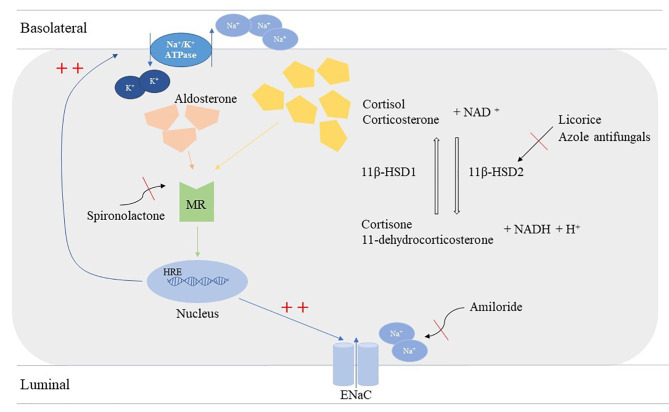Fig. 1.
Mechanisms of apparent mineralocorticoid excess syndrome. 11β-HSD2 enzyme facilitates the conversion from active cortisol to inactive metabolite form, cortisone; 11β-HSD1 has an opposing function. Physically, aldosterone and cortisol are both ligands of mineralocorticoid receptors, which results in binding to nuclear hormone response elements, leading to transcription of Na+/K+ ATPase and EnaC channels. The deficiency of 11β-HSD2 fails in the metabolism of cortisol and results in excessive mineralocorticoid, so as the over-ingestion of licorice and azole antifungals causes the same effects. Mineralocorticoid receptor blocker, spironolactone, could block the hyperactivation of mineralocorticoid receptors while amiloride blocks EnaC remarkably.

